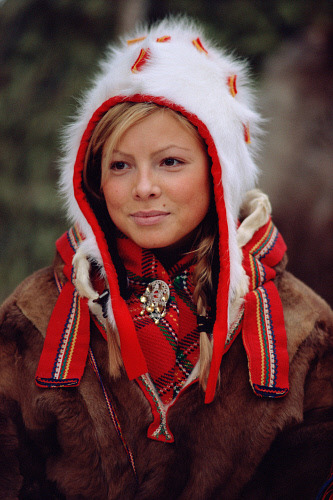The Sami people, indigenous to the northern reaches of Scandinavia, possess a unique and rich cultural heritage, much of which is encapsulated in their language, Sámi. This language is not merely a means of communication; it embodies the intricate relationship the Sami have with their land, their traditions, and ultimately, their spiritual beliefs. The exploration of the Sámi tongue opens a window into the lives of these resilient people, inviting a comprehensive understanding that resonates with Christian perspectives on community, stewardship, and the divine.
The Sámi language consists of several dialects, primarily classified into three main groups: North Sámi, Lule Sámi, and South Sámi. Each variant carries distinct phonetic and grammatical characteristics, reflecting the geographical and social diversity of the Sami tribes. North Sámi, for instance, is the most widely spoken dialect, serving as a lingua franca among various Sami communities. This diversity, however, does not fragment the Sami identity; rather, it underscores a shared heritage grounded in oral tradition and communal narratives.
At the heart of Sami linguistic expression lies a profound connection to their environment. The language is replete with terms that describe the natural landscape, from specific names for various reindeer—a central aspect of their nomadic livelihood—to intricate words for different types of snow. This linguistic richness illustrates the Sami’s theological perception of nature as a manifestation of the sacred, aligning closely with the Christian understanding of creation as imbued with divine purpose and beauty. In Scripture, God’s creation is constantly celebrated, and similarly, the Sami language reflects reverence for the land and its fauna, embodying the essence of stewardship that both cultures espouse.
From a Christian perspective, the intertwining of language and spirituality is noteworthy. Just as the Gospel encourages the faithful to communicate love, truth, and wisdom through words, the Sami people employ their language to weave together their spiritual narratives and community bonds. Rituals and storytelling play a pivotal role in Sami culture, where language serves as a vessel for passing down ancestral knowledge and moral teachings. The Sámi practice joik—a traditional form of song that transcends mere mnemonic function, allowing individuals to express their connection to personal and communal identities. This art form parallels the Christian tradition of hymnody, where music and language unite to elevate spiritual experience and foster a sense of worship.
Moreover, the linguistic nuances present in Sámi can provide insights into the social fabrics of Sami society. The language encapsulates concepts of kinship and community cohesiveness, essential elements for a people whose survival has historically depended on collaboration and mutual support. Terms relating to familial bonds and communal roles are elaborately constructed, signifying the depth of relationships among the Sami. From a Christian standpoint, this reflects how collective identity and fellowship are paramount in nurturing one’s faith—a characteristic exemplified in the teachings of Christ, who emphasized love for one’s neighbor and communal responsibility.
The intersection of language, identity, and faith raises crucial questions about preservation and revival in the contemporary landscape. Following centuries of assimilation pressures and policy-driven erasure, the Sámi language has faced significant challenges. However, recent movements advocating for linguistic rights and cultural revitalization mirror a potent desire to safeguard their legacy. Such endeavors coincide with Christian ideals of preservation and protection of the vulnerable, resonating with the call to steward all aspects of God’s creation, including cultural heritage.
Christians can learn from the Sámi vernacular in addressing modern-day issues related to language extinction and cultural loss. As the church seeks to engage in meaningful dialogue about human dignity, it becomes imperative to champion linguistic diversity as a reflection of God’s creativity. Encouraging the revitalization of the Sámi language not only honors the Sami people but also enriches the broader Christian narrative of inclusivity and diversity.
Additionally, in recognizing the complexity of the Sami language, one can appreciate the corresponding complexity in theological discourse. Language shapes the narratives we tell about God and humanity. Sámi language, with its specific terminology and metaphors, offers an alternative lens through which to comprehend divinity. This invites Christians to embrace multilingualism as a divine gift, enhancing our theological reflections through the richness of diverse cultural experiences.
Ultimately, the Sámi tongue invites us to ponder profound truths about humanity’s relationship with the Creator and creation. It challenges us to see our languages as living entities through which the sacred can be expressed. Engaging with the Sami people and their rich linguistic heritage enriches our understanding of what it means to belong to a global family, intricately woven together by different cultures, languages, and faiths.
Through the lens of the Sámi language, we are reminded that words have the power to both unite and divide. They can convey love, foster understanding, and enrich communal life or perpetuate misunderstanding and conflict. Embracing the Sámi tongue serves as an invitation to explore the depths of human experience and the divine. As Christians, there lies an opportunity not only to learn but to advocate for a world where every language—in all its intricacies—continues to sing the praises of its people and their God.



